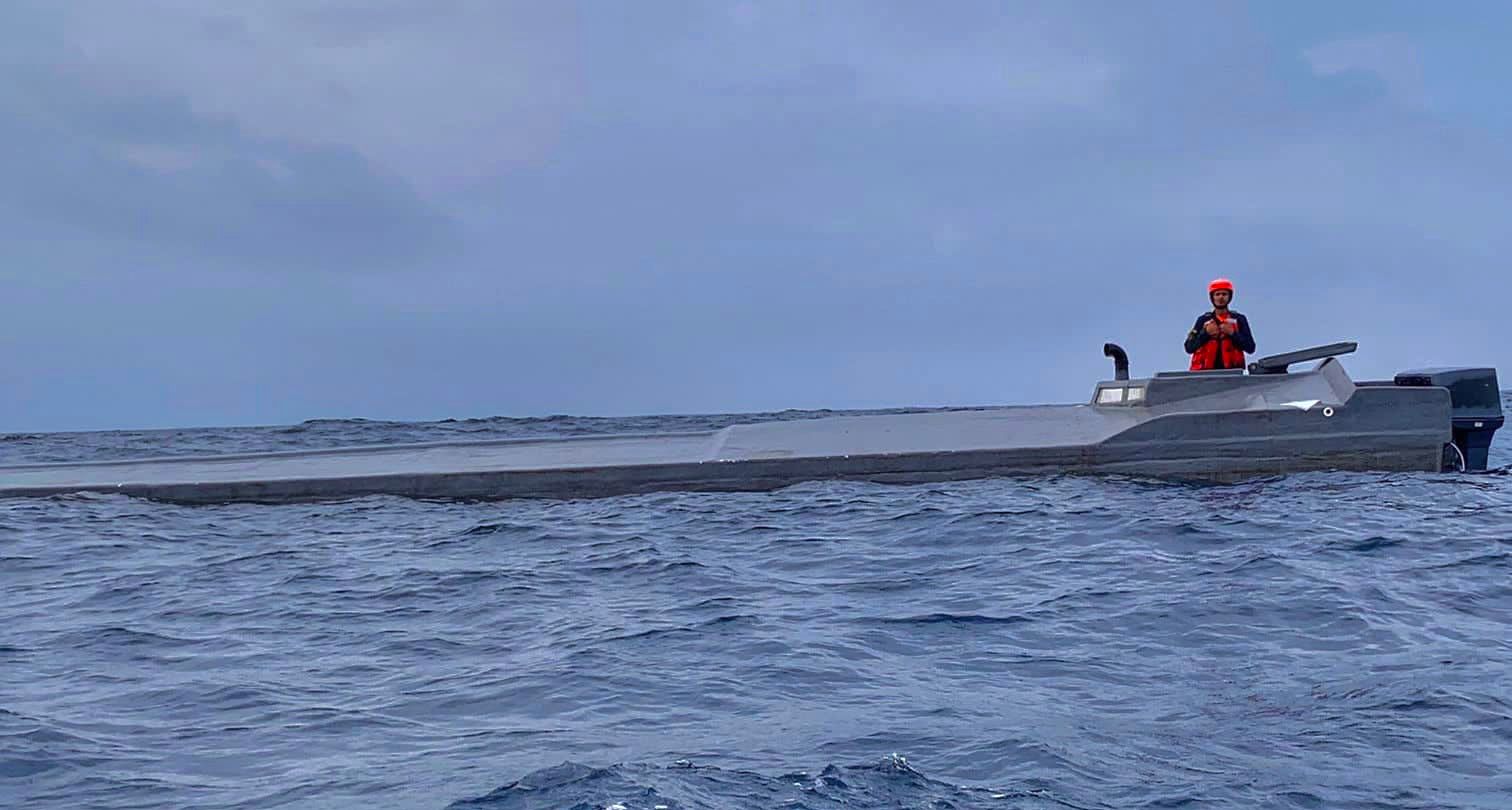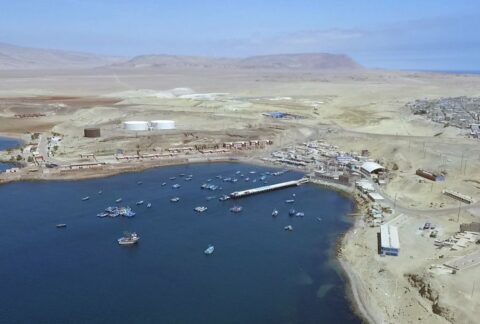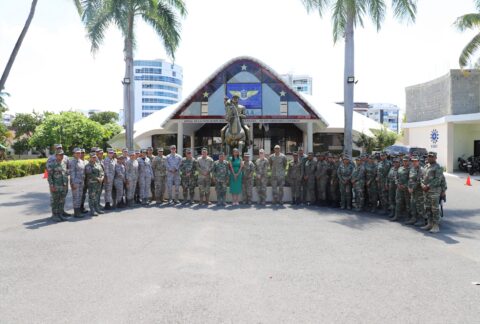The Colombian Navy intercepted the largest semi-submersible in its history in the Colombian Pacific in mid-May. The narco sub, crewed by three Colombians and headed for Central America, was 30 meters long and 3 meters wide and was loaded with 3,058 kilograms of cocaine hydrochloride.
Radars on Colombian Navy ships identified the suspicious vessel in the South Pacific, while a Colombian Air Force (FAC) aircraft, with support from U.S. Southern Command’s Joint Interagency Task Force South, tracked it until coast guard units could interdict it. The joint operation was conducted amid adverse weather conditions.
“The Navy units […] focused on safeguarding and protecting the human life of the [three] crew members of the semi-submersible, taking into account that the artifact presented a water entry,” Colombian Navy Captain Juan Pablo Pinilla Acosta, chief of Staff of the Pacific Naval Force, told the media. After bringing the crew to safety and recovering the 102 packages with the illegal cargo, the vessel was sunk.
Only months prior, in March, Navy units recovered two lifeless bodies from within another semi-submersible, highlighting the risks those who undertake this illicit journey run. In that occasion, toxic gases from the fuel that the vessel carried proved fatal.
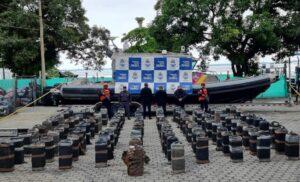
“Semi-submersibles and submersibles are wooden hulls covered in fiberglass,” Colombian Navy Vice Admiral Orlando Enrique Grisales Franceschi, chief of Naval Operations Staff, told Diálogo. “So navigational safety is very, very low, and they are mainly being built in the estuaries that we find to the south of the Colombian area of operational responsibility, such as the departments of Cauca and Nariño.”
In addition to the 11 semi-submersibles seized in 2023, up to mid-May, the Colombian Military Forces dismantled two criminal groups dedicated to their manufacture, the last one in late March, when troops captured 12 members of a transnational narcotrafficking organization that assembled semi-submersibles to traffic cocaine hydrochloride.
The criminals were captures during an operation involving the Colombian Navy, Army, and the Attorney General’s Office, together with the Spanish Civil Guard.
This criminal group built the semi-submersibles to transport cocaine hydrochloride to Central America and Europe and was allegedly responsible for migrating the construction of semi-submersibles to countries on the Atlantic coast, such as Brazil and Guyana. “This operation affects those organizations that have been pioneering the construction of semi-submersibles and have been obviously affecting global communities with the transport of hallucinogens,” Admiral Francisco Cubides Granados, commander of the Colombian Navy, told the press.
Authorities know, through intelligence gathering, which group launches from land, and what their support networks are in both transit and countries of destination. Operations have shown that these vessels use different routes, Vice Adm. Grisales said.
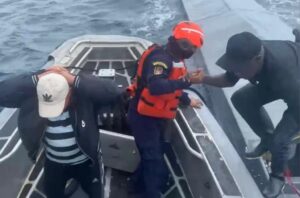
The Pacific route goes from the south of the Galapagos Islands in Ecuador and changes course north to reach the Mexican coast. While the Caribbean route leaves the Colombian coast, transits through the archipelago of San Andrés and Providencia and reaches the coast of Honduras in the Gulf of Mexico, Vice Adm. Grisales said. Authorities also know that similar hulls are being built in the Guianas region, from where a route crosses the Atlantic Ocean to reach Africa and European coasts on the North Atlantic.
The evolution of these forms of transport for illicit substances is significant. “The first semi-submersible seized [in 1993] had a load capacity of more or less 300 to 500 kg and a navigation range of more or less 400 nautical miles,” Vice Adm. Grisales said. “The semi-submersibles that we interdict today have a load capacity of 6 to 8 tons and a navigation autonomy of around 2,500 to 3,000 nautical miles, with engines inside and out.”
“What we’ve noticed is that with semi-submersibles a transport cell offers the services of this type of vessel, which are used by several organizations simultaneously. That is, a small organization can use this modality if it coordinates with other trafficking groups, what is sent, with the different labels on the drugs seen in the shipments,” Vice Adm. Grisales said. “The large organizations are practically tied to illegal armed groups such as dissidents of the FARC [Revolutionary Armed Forces of Colombia], the Clan del Golfo, and the ELN [National Liberation Army], but they also appear on the scene of transnational criminal organizations from the Americas and Europe.”
From 1993 to mid-May 2023, the Colombian Navy intercepted and seized 228 illegal semi-submersible and submersible type artifacts, the naval institution indicated.

